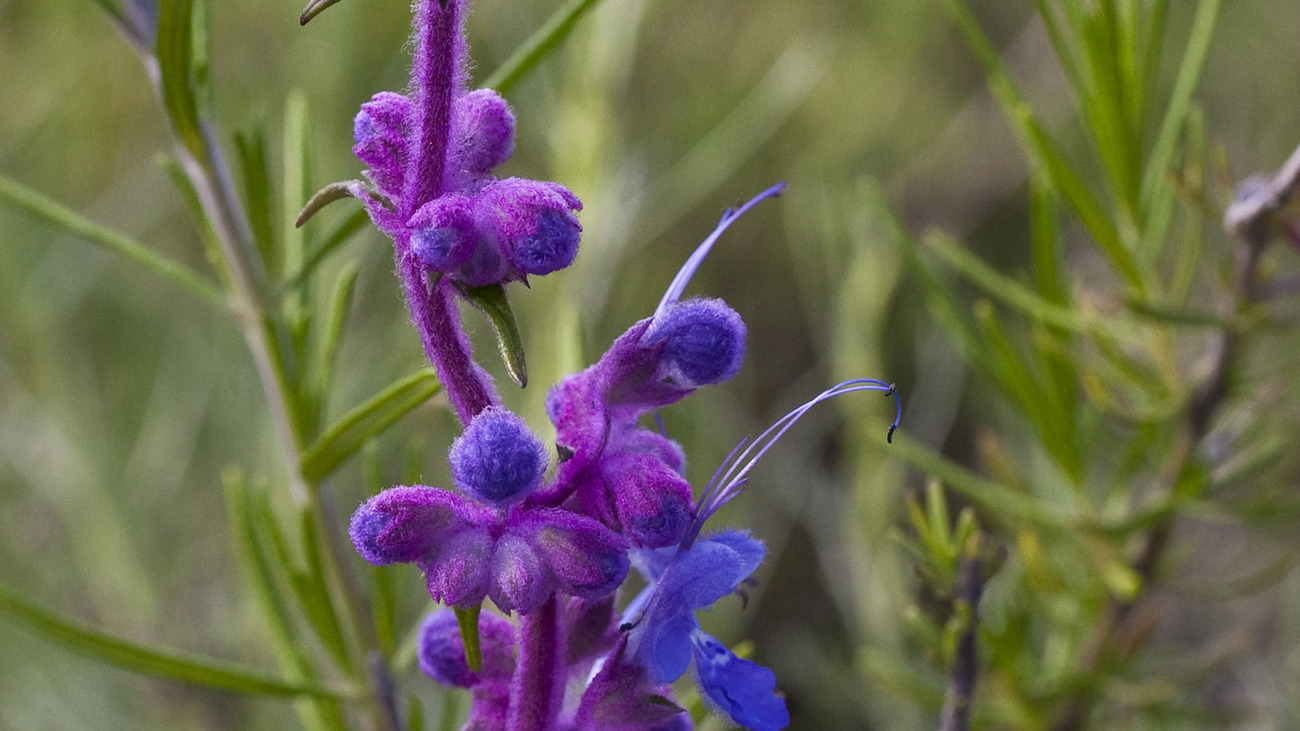
Woolly Bluecurls, scientifically known as Trichostema lanatum, are incredibly fascinating plants that captivate with their unique features and impressive characteristics. Native to California and Baja California, these stunning perennials can be found in coastal and inland areas, thriving in a variety of environments.
In this article, we will delve into the captivating world of Woolly Bluecurls and uncover 11 astonishing facts about these remarkable plants. From their distinctive appearance to their medicinal properties and ecological significance, you’ll be amazed at what Woolly Bluecurls have to offer. So, let’s dive in and explore the wonders of this intriguing plant species.
Key Takeaways:
- Woolly Bluecurls are fascinating plants native to California with hair-like flowers that attract pollinators. They have medicinal uses, are drought-tolerant, and play a crucial role in supporting biodiversity.
- Despite being low-maintenance and attractive to gardeners, Woolly Bluecurls face conservation concerns due to habitat loss. Efforts are being made to protect and preserve these remarkable plants.
Hair-like Flowers
The Woolly Bluecurls, also known as Trichostema lanatum, gets its name from the unique appearance of its flowers. The delicate blue flowers have hair-like structures that curl and give the plant its distinctive look.
Native to California
These fascinating plants are native to California and can be found primarily in the coastal sage scrub and chaparral habitats of the state. They thrive in the Mediterranean climate and are well-adapted to its unique conditions.
Attracts Pollinators
The intricate flowers of the Woolly Bluecurls are not just for show. They play a crucial role in attracting pollinators such as bees, butterflies, and hummingbirds. These flying visitors are essential for the plant’s reproduction and the survival of the species.
Medicinal Uses
The indigenous people of California recognized the medicinal properties of the Woolly Bluecurls. They used different parts of the plant for various purposes, including treating coughs, colds, and stomachaches. This plant has a long history of traditional medicinal use.
Drought-Tolerant
The Woolly Bluecurls have adapted to survive in the arid conditions of California. They have developed deep root systems that help them access water even in times of drought. This makes them an excellent choice for xeriscaping and water-wise gardening.
Attractive to Gardeners
The unique appearance and striking blue flowers of the Woolly Bluecurls make them a favorite among gardeners looking to add diversity and color to their landscapes. They can be cultivated both in pots and in garden beds, bringing beauty and charm to any setting.
Aromatic Leaves
When you gently rub the leaves of the Woolly Bluecurls, you will release a pleasant scent. The aromatic leaves not only add to the plant’s overall appeal but also serve as a natural deterrent to pests.
Short-Lived Perennial
While the Woolly Bluecurls are considered perennials, they have a relatively short lifespan. They typically live for about three to five years, but with proper care and maintenance, they can continue to grace your garden for longer.
Low-Maintenance Plant
The Woolly Bluecurls are relatively low-maintenance plants, making them a great choice for both beginner and experienced gardeners. They require minimal watering once established and are generally resistant to pests and diseases.
Important Habitat Plant
Woolly Bluecurls play a crucial role in their native ecosystem as an important habitat and food source for various insects and animals. They support biodiversity by providing shelter and sustenance to a range of beneficial wildlife species.
Conservation Concerns
Despite their hardy nature, the Woolly Bluecurls face some conservation concerns. Loss of habitat due to urbanization and invasive species encroachment threatens their populations. Efforts are being made to protect and preserve these remarkable plants.
Conclusion
In conclusion, woolly bluecurls is a fascinating plant species that boasts a unique set of characteristics and qualities. From its vibrant purple flowers to its ability to tolerate harsh environments, woolly bluecurls are truly extraordinary. Not only are they aesthetically pleasing, but they also have medicinal properties and play an important role in supporting local ecosystems.If you’re a fan of native Californian plants or simply have an interest in botany, woolly bluecurls is definitely a species to keep an eye out for. Whether you encounter them in the wild or choose to cultivate them in your own garden, these plants are sure to captivate you with their beauty and resilience. So, next time you come across a woolly bluecurls plant, take a moment to appreciate its unique features and the wonders of nature it represents.
FAQs
Q: What is the scientific name for woolly bluecurls?
A: The scientific name for woolly bluecurls is Trichostema lanatum.
Q: Where can woolly bluecurls be found?
A: Woolly bluecurls are native to California and can be found in various regions, including the coastal areas and inland mountains.
Q: What are the ideal growing conditions for woolly bluecurls?
A: Woolly bluecurls thrive in full sun and well-drained soil. They are adapted to grow in Mediterranean climates, with hot, dry summers and mild, wet winters.
Q: Do woolly bluecurls require any special care?
A: Woolly bluecurls are relatively low-maintenance plants. They are drought-tolerant once established and do not require frequent watering. However, they can benefit from occasional pruning to maintain their shape.
Q: Are there any uses for woolly bluecurls?
A: Yes, woolly bluecurls have several uses. They have been traditionally used by Native Americans for medicinal purposes, such as treating coughs and colds. Additionally, they provide nectar and habitat for pollinators, making them beneficial for local ecosystems.
Q: Can I grow woolly bluecurls in my garden?
A: Absolutely! Woolly bluecurls can be a beautiful addition to any garden, particularly if you live in a Mediterranean climate. Just make sure to provide them with the appropriate growing conditions, as mentioned earlier.
Q: Is woolly bluecurls a protected species?
A: Woolly bluecurls are not listed as federally protected, but they may be protected at the state or local level in certain regions. It is always important to respect and preserve native plant species.
Woolly Bluecurls may be short-lived, but your curiosity about fascinating plants doesn't have to be! Dive into the world of native plants with our article on Compass Plant, a prairie marvel that orients its leaves north and south. Thirsty for more? Quench that thirst with Dymondia, a drought-tolerant groundcover that thrives in dry conditions. Finally, add some pizzazz to your garden with Brunnera, a perennial that boasts stunning foliage and delicate blue flowers. Explore these captivating plants and expand your botanical knowledge today!
Was this page helpful?
Our commitment to delivering trustworthy and engaging content is at the heart of what we do. Each fact on our site is contributed by real users like you, bringing a wealth of diverse insights and information. To ensure the highest standards of accuracy and reliability, our dedicated editors meticulously review each submission. This process guarantees that the facts we share are not only fascinating but also credible. Trust in our commitment to quality and authenticity as you explore and learn with us.


